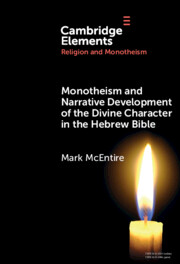Element contents
Monotheism and Narrative Development of the Divine Character in the Hebrew Bible
Published online by Cambridge University Press: 29 November 2023
Summary
- Type
- Element
- Information
- Online ISBN: 9781009238984Publisher: Cambridge University PressPrint publication: 21 December 2023
References
- 8
- Cited by



